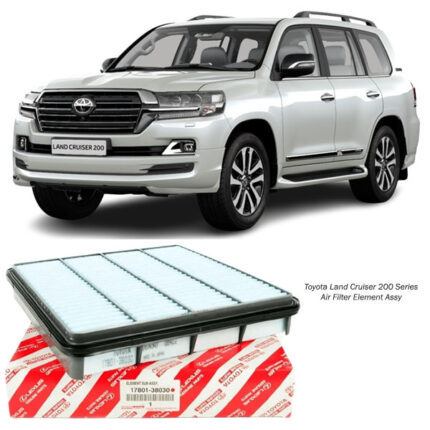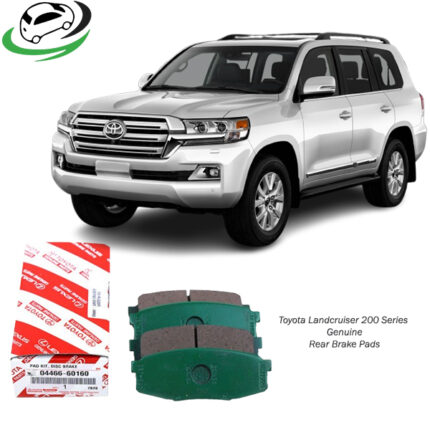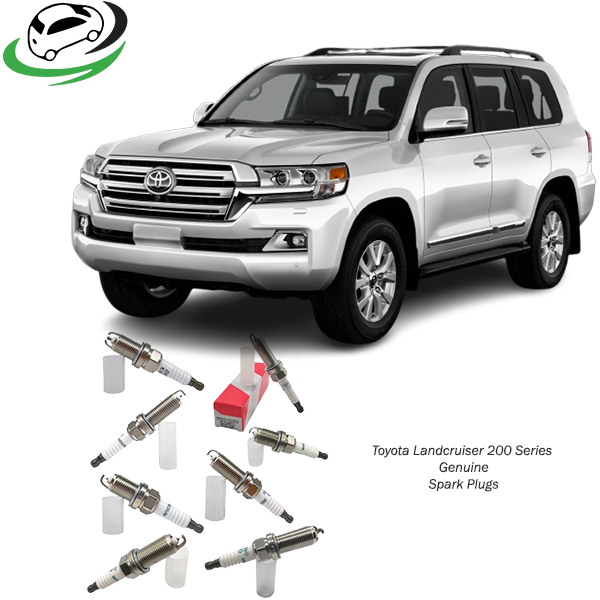-20%
The braking system is one of the most crucial safety features in any vehicle, and the front brake disc (also known as the brake rotor) is a key component of this system. It plays an essential role in slowing down and stopping the vehicle when the brake pedal is applied. The front brake disc works in tandem with the brake pads, converting kinetic energy into heat energy through friction. Using genuine front brake discs, which are designed specifically for the make and model of the vehicle, is critical to ensure optimal performance, safety, and longevity of the braking system.
Functions of a Genuine Front Brake Disc
- Slowing and Stopping the Vehicle The primary function of the brake disc is to slow down and stop the vehicle. When the brake pedal is pressed, the brake caliper clamps the brake pads against the rotating disc. This friction between the brake pads and the disc generates the necessary force to slow the vehicle down. A genuine front brake disc ensures that this process occurs smoothly and efficiently, providing consistent braking power.
- Heat Dissipation The braking process generates significant heat due to the friction between the pads and the disc. Genuine front brake discs are designed to dissipate heat effectively, preventing the disc from overheating. Excessive heat can lead to brake fade, which reduces braking performance and increases stopping distances. A genuine disc is made from high-quality materials with excellent heat dissipation properties, allowing for consistent braking performance even under heavy use.
- Balanced Braking Force The front brake discs bear most of the braking force because the weight of the vehicle shifts forward when the brakes are applied. Therefore, front brake discs must be able to handle higher loads compared to rear brake discs. Genuine brake discs are specifically engineered to provide balanced braking power, ensuring that the front wheels receive the appropriate amount of force, leading to better control and shorter stopping distances.
- Minimizing Wear on Brake Pads The surface of the brake disc affects the wear rate of the brake pads. A genuine brake disc is manufactured to exacting standards, ensuring a smooth and even surface that minimizes excessive wear on the brake pads. This prolongs the life of the pads and ensures consistent braking performance.
Materials Used in Genuine Front Brake Discs
The material composition of a brake disc has a direct impact on its performance and longevity. Genuine front brake discs are typically made from high-quality materials such as:
- Cast Iron Cast iron is the most common material used in the production of brake discs. It is durable, resistant to heat, and provides excellent friction characteristics. Genuine cast iron brake discs are carefully designed to handle the stresses of braking, offering long-lasting performance and reliable stopping power.
- Carbon Composite Some high-performance or luxury vehicles use carbon composite brake discs, which are much lighter than traditional cast iron discs. These discs offer superior heat resistance and improved braking performance, especially in high-temperature environments. While they are more expensive, genuine carbon composite brake discs are highly effective in reducing stopping distances and enhancing vehicle performance.
- Ceramic Ceramic brake discs are another option found in high-performance vehicles. They offer excellent heat dissipation, low wear rates, and reduced brake dust. Ceramic discs are highly resistant to fading, making them ideal for sports cars or vehicles that experience high braking demands. Genuine ceramic brake discs are designed to withstand extreme conditions while offering superior braking performance.
Benefits of Using Genuine Front Brake Discs
- Optimal Fit and Performance One of the key benefits of using genuine front brake discs is their precise fit. Genuine discs are designed specifically for the make and model of the vehicle, ensuring that they fit perfectly with the braking system. This precise fit allows for optimal braking performance, as the disc and brake pads work in perfect harmony. Substandard or non-genuine discs may not fit as accurately, leading to poor performance and potential safety hazards.
- Superior Quality Control Genuine front brake discs undergo rigorous testing and quality control during the manufacturing process. This ensures that they meet the highest standards for safety, performance, and durability. Using a genuine brake disc reduces the risk of defects or premature wear, providing peace of mind for vehicle owners. Non-genuine discs may not meet the same quality standards, which can lead to compromised safety and performance.
- Enhanced Safety Brakes are a critical safety system in any vehicle, and the quality of the brake disc directly impacts the overall safety of the vehicle. Genuine front brake discs are engineered to provide maximum stopping power and consistent performance, even under demanding conditions. This reduces the likelihood of brake fade, vibration, or other issues that can compromise braking performance.
- Longer Lifespan Genuine front brake discs are made from high-quality materials that are designed to withstand wear and tear. The superior heat dissipation properties of genuine discs help prevent warping or cracking, which can occur with lower-quality discs. This extends the lifespan of the brake disc, reducing the need for frequent replacements and lowering maintenance costs over time.
- Improved Comfort and Noise Reduction Genuine brake discs are designed to minimize noise and vibrations during braking. Poor-quality or worn brake discs can produce squealing or grinding noises, which not only detract from the driving experience but can also indicate a problem with the braking system. Genuine discs are carefully engineered to provide a smooth, quiet braking experience.
Maintenance Tips for Genuine Front Brake Discs
To ensure the longevity and performance of your genuine front brake discs, proper maintenance is essential. Here are some tips to keep them in optimal condition:
- Regular Inspection It’s important to inspect the brake discs regularly for signs of wear or damage. Look for grooves, scoring, or uneven wear on the surface of the disc. If the discs appear worn or damaged, they may need to be replaced to maintain optimal braking performance.
- Brake Pad Replacement The condition of the brake pads directly affects the wear of the brake disc. Worn-out brake pads can cause excessive wear on the disc, leading to grooves and scoring on the disc surface. To avoid this, always replace the brake pads before they wear down completely. Using genuine brake pads alongside genuine discs ensures that both components work together effectively.
- Avoid Overheating the Brakes Excessive braking or heavy use of the brakes over long periods can cause the brake discs to overheat. This can lead to brake fade, reduced performance, and even warping of the disc. To prevent overheating, avoid riding the brakes for extended periods, especially when driving downhill, and use engine braking where possible.
- Clean the Brake Discs Brake discs can accumulate dirt, debris, and brake dust over time. Regular cleaning of the brake discs helps to prevent this buildup, which can affect braking performance. Use a brake cleaner or mild soap and water to clean the discs, making sure to dry them thoroughly before driving.
- Monitor for Signs of Warping or Vibration Warped brake discs can cause the steering wheel or brake pedal to vibrate when braking. This is a clear sign that the brake discs may need to be replaced. Warping is often caused by excessive heat buildup, so it’s important to address this issue as soon as possible to maintain safe braking performance.
- Replace Discs in Pairs When replacing front brake discs, it’s important to replace both discs on the front axle at the same time. This ensures that the braking performance is balanced on both sides of the vehicle. Replacing only one disc can lead to uneven braking, which can affect the handling and safety of the vehicle.
Signs of a Worn or Failing Brake Disc
Several signs indicate that your front brake discs may need to be replaced:
- Squealing or Grinding Noise If you hear squealing or grinding noises when applying the brakes, it may indicate that the brake pads are worn and damaging the disc surface.
- Vibration When Braking Warped brake discs can cause the vehicle to vibrate when braking, especially at higher speeds. This is a sign that the discs may need to be resurfaced or replaced.
- Increased Stopping Distance If your vehicle takes longer to stop than usual, it could be due to worn or damaged brake discs. This can compromise safety and should be addressed immediately.
- Visible Wear or Scoring Inspect the brake discs for visible signs of wear, such as grooves, scoring, or cracks. If the discs appear damaged, they should be replaced to ensure safe and effective braking.
Conclusion
Genuine front brake discs are a critical component in maintaining the safety and performance of a vehicle’s braking system. They provide optimal stopping power, superior heat dissipation, and long-lasting durability. By using genuine parts and following proper maintenance practices, vehicle owners can ensure that their braking system performs reliably, providing peace of mind on the road. Regular inspections, timely brake pad replacements, and attention to warning signs will help prolong the life of the brake discs and enhance overall vehicle safety.



